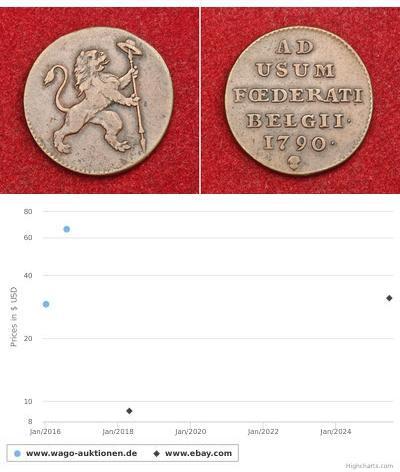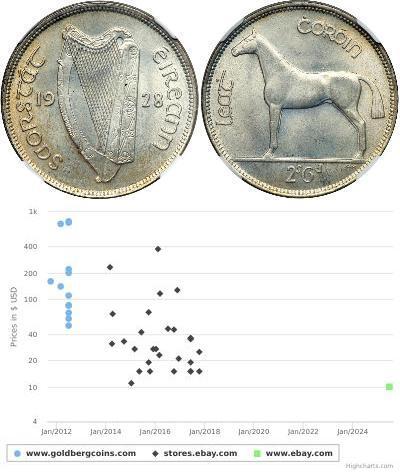Coins of Catherine the Great
Catherine the Great, also known as Catherine II, was one of the most prominent and successful rulers of Russia. Her reign lasted from 1762 to 1796, and during this time, coins played a crucial role in Russia's monetary system.
Early Life: Catherine was born Sophia Augusta Fredericka in Stettin, Prussia (now Szczecin, Poland), on May 2, 1729. She married the future Emperor Peter III of Russia in 1745 and converted to the Russian Orthodox Church, taking the name Catherine. She was crowned Empress consort in 1762 after Peter III's accession to the throne.
Accession to the Throne: Catherine's reign began with a coup d'état in which she, supported by the Russian nobility and the military, overthrew her husband, Peter III, who was widely unpopular. She was proclaimed Empress of Russia, marking the start of her illustrious reign.
Domestic Reforms: Catherine implemented various domestic reforms aimed at modernizing Russia and improving the lives of its citizens. She enacted laws to promote education, healthcare, and local governance. She also supported the arts and sciences, fostering a cultural renaissance known as the "Russian Enlightenment."
Territorial Expansion: Catherine presided over significant territorial expansion during her reign, adding vast territories to the Russian Empire through conquest, diplomacy, and colonization. She annexed Crimea, expanded into the Caucasus region, and conducted successful military campaigns against the Ottoman Empire and Poland.
Foreign Policy: Catherine pursued an ambitious foreign policy agenda, aiming to establish Russia as a great European power. She maintained alliances with other European monarchies, engaged in diplomatic maneuvering, and sought to balance power dynamics on the continent.
Patronage of the Arts and Culture: Catherine was a great patron of the arts and culture. She founded numerous cultural institutions, including the Hermitage Museum in St. Petersburg, which today houses one of the world's largest and most prestigious art collections. She also corresponded with prominent Enlightenment figures such as Voltaire and Denis Diderot.
Personal Life: Catherine's personal life was marked by political intrigue and scandal. She had several romantic relationships and was rumored to have taken numerous lovers, including some who played influential roles in her court.
Legacy: Catherine the Great is remembered as one of the most successful and influential rulers in Russian history. Her reign saw Russia's emergence as a major European power and a center of cultural and intellectual activity. Despite criticisms and controversies, Catherine's legacy endures as that of a skilled stateswoman and enlightened monarch.
Here are some key points about the coins of Catherine the Great:
Continuation of Coinage Reforms: Catherine continued the modernization efforts initiated by her predecessors, including reforms to the Russian coinage system. She aimed to improve the quality, consistency, and efficiency of coin production.
Silver Coinage: Silver coins remained a staple of Russia's currency during Catherine's reign. These coins, known as "kopiykas" or "kopecks," were used for everyday transactions and came in various denominations.
Copper Coinage: Copper coins were also in circulation during Catherine's reign, serving as lower-denomination currency for smaller transactions. These coins were known as "dengas" or "dengi" and featured simpler designs compared to the silver coins.
Gold Coinage: Gold coins were minted during Catherine's reign as well, although they were less commonly used in everyday transactions due to their higher value. These coins were often used for larger transactions or as a store of wealth.
Saint Petersburg Mint: Catherine continued to support the Saint Petersburg Mint, which had been established during the reign of Peter the Great. The mint played a crucial role in producing coins for the Russian Empire and ensuring the stability of the monetary system.
Variety of Designs: Coins minted during Catherine's reign featured a variety of designs, including portraits of Catherine herself, allegorical figures, heraldic symbols, and inscriptions in Cyrillic script.
Denominations and Standards: Catherine oversaw the minting of coins in various denominations to accommodate different needs and economic activities. She also standardized the weight, size, and metal content of coins to ensure uniformity and consistency.
Collector's Items: Coins from Catherine the Great's reign are highly sought after by collectors due to their historical significance, artistic merit, and cultural value. These coins provide valuable insights into Russia's evolving monetary system and the political and social context of Catherine's era.
Overall, the coins of Catherine the Great reflect her efforts to maintain stability and prosperity in Russia and to continue the modernization initiatives of her predecessors. They remain important artifacts of Russian history and numismatics, cherished by collectors worldwide.
You may be interested in following coins
2025-05-24
- Historical Coin Prices
2025-06-14
- Historical Coin Prices







